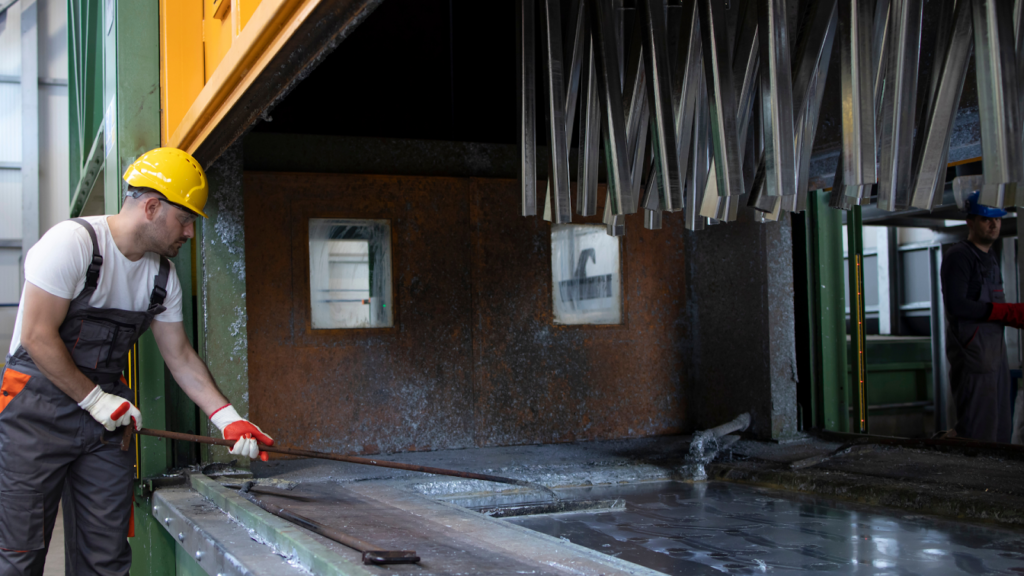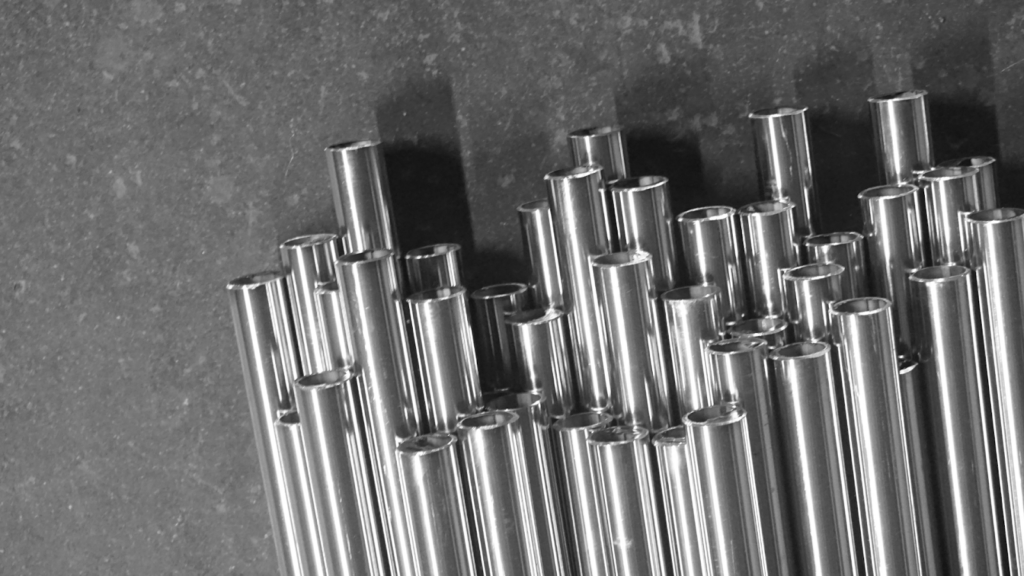Passivation is a crucial process that enhances the corrosion resistance of stainless steel components. By removing surface contaminants and forming a protective oxide layer, passivation ensures the durability and longevity of stainless steel, safeguarding it from the harsh effects of corrosion and other environmental factors.
In this article, we will explore the significance of passivation in protecting stainless steel components from corrosion, its key benefits, and the steps involved in the process. We will also discuss the differences between passivation and electroplating, as well as the safety measures to consider during passivation. By understanding the essentials of passivation, you can maximize the longevity and performance of your stainless steel components while minimizing costs and downtime.
To learn more about passivation and how it can benefit your stainless steel components, get in touch with us today. Our knowledgeable team is ready to provide expert guidance and assistance!
What Is Passivation?
Passivation is a crucial chemical process that protects stainless steel from corrosion by removing free iron particles from its surface, which can lead to rust and other forms of corrosion.
This process utilizes an acid solution, typically nitric acid or a citric acid passivation solution, to accomplish this task. As a result, a thin, protective oxide layer forms on the stainless steel surface, making it less likely to react with air and cause corrosion.(1)
This widely-used metal finishing process not only helps prevent corrosion but also improves the appearance of the stainless steel, giving it a brighter and more attractive look.
Passivation is often employed during the manufacturing process of stainless steel components to ensure their durability and resistance to rust.
What Is Corrosion And What Causes It?
Corrosion is a natural process of oxidation and degradation that affects metals, causing them to become weak, brittle, and ultimately fail. This issue is widespread across various industries, including oil and gas, automotive, aerospace, and medical.
It is primarily caused by exposure to environmental factors such as moisture, oxygen, and other chemicals. In some instances, bacteria or fungi may also contribute to corrosion by breaking down the metal surface.
The most prevalent cause of corrosion is the presence of water or moisture, which can react with the metal surface to form an oxide layer. Oxygen also plays a significant role in corrosion, as it can react with the metal to create an oxide layer. Other chemicals, including acids and bases, may contribute to corrosion.
Why Do You Need To Passivate Stainless Steel?
Passivation plays a critical role in safeguarding stainless steel from corrosion. By eliminating contaminants or impurities from the steel’s surface, passivation fosters the formation of an oxide layer that serves as a barrier against rust and corrosion.
Although this oxide layer naturally forms when stainless steel is exposed to air, a chemical passivation process can speed up its development.
This protective measure shields stainless steel from various corrosive elements, such as water, salt, and other chemicals. Without passivation, the steel’s surface can become pitted and corroded, leading to rust and further damage.
Additionally, passivation reduces the risk of contamination from external sources like dirt and other pollutants that may compromise the steel’s integrity.
How Does Passivation Work?
The passivation process entails immersing stainless steel in an acidic solution, typically nitric acid, to eliminate contaminants.
The acid dissolves iron particles, dirt, oil, and grease, leaving a clean surface and creating a thin, protective oxide layer. This layer safeguards the steel from further corrosion and provides a glossy finish.
After passivation, the steel is rinsed with water to eliminate any remaining acid and contaminants, ensuring a clean, uncontaminated surface. The passivated steel is then ready for use in applications where corrosion resistance is vital.
What Are The Conditions Necessary For The Passivation Of Stainless Steel?
For successful passivation, stainless steel surfaces must be free of contaminants like iron, enabling the chromium to react with oxygen in ambient air and form an inert or passive layer of chromium oxide on the metal’s surface.
Certain conditions must be met for the passivation process to be effective: (2)
- The stainless steel must be cleaned of any surface contaminants and placed in a dry, oxygen-rich environment.
- Temperature control is essential, as extreme temperatures can impact passivation results. Moreover, the pH of the passivation solution must be carefully monitored, as incorrect pH levels can render the process ineffective.
- The concentration of the passivation solution must be closely observed. Deviations from the proper concentration can compromise the process’s effectiveness. To ensure the best results, it is crucial to follow the manufacturer’s instructions when using the passivation solution.
Benefits Of Passivation For Stainless Steel
Passivation helps to remove surface contamination, reduce the risk of contamination, and save money and downtime. It is an essential step in protecting stainless steel from corrosion and offers a range of benefits.
Here are the benefits of passivation for stainless steel:
Remove Surface Contamination
Contaminants like oil, grease, and dirt can impede the corrosion resistance of stainless steel. Passivation effectively removes these surface contaminants, ensuring a clean and uncontaminated surface. This improves the overall performance and longevity of the stainless steel by enhancing its ability to resist corrosion.
Reduce The Risk Of Contamination
Passivation not only removes existing surface contamination but also creates a protective oxide layer on the stainless steel surface. This oxide layer acts as a barrier, preventing further contamination from corrosive substances such as chemicals, salts, and moisture.
By reducing the risk of contamination, passivation helps maintain the integrity and purity of stainless steel, making it suitable for use in various industries, including food processing and pharmaceutical.
Save Money And Downtime
Thanks to passivation, stainless steel components, and equipment are better protected against corrosion, leading to cost savings in terms of repair, replacement, and downtime. By preventing corrosion, the lifespan of stainless steel extends, reducing the need for frequent maintenance and replacement of corroded parts. This helps businesses save money on repairs and replacements and minimize downtime caused by equipment failure or replacement.
Take advantage of these benefits by contacting Valence today! We’re a trusted provider of passivation services specializing in protecting stainless steel from corrosion. With our expertise and state-of-the-art passivation techniques, we can help ensure the longevity and performance of your stainless steel components.
So don’t wait until corrosion becomes a problem; reach out to us today to discuss your passivation needs and safeguard your stainless steel investments!
What Is The Difference Between Plating And Passivation
Plating and passivation are two distinct processes used to enhance metal surfaces, serving different purposes. Plating primarily improves the metal’s appearance and electrical conductivity and provides corrosion protection. This process typically employs an electrolytic method, where an electric current passes through a plating solution containing the desired metal. As a result, the metal ions in the solution are attracted to the substrate, forming a thin coating on its surface.(3)
Conversely, passivation focuses on boosting the metal surface’s corrosion resistance. This chemical process involves removing impurities from the metal surface and subsequently forming a protective oxide layer. The oxide layer shields the metal from corrosion and other environmental factors. Passivation is commonly achieved using an acid solution, such as nitric or citric acid, which dissolves the impurities on the metal surface and forms the protective oxide layer.
Safety Measures That Should Be Taken During Passivation Of Stainless Steel
Safety is of the utmost importance when passivating stainless steel. As with any chemical process, appropriate precautions are necessary to protect both personnel and equipment.
When handling the chemicals involved in passivation, wearing protective clothing, such as gloves and eye protection, is crucial. Furthermore, it’s essential to conduct the passivation process in a well-ventilated area to minimize the risk of chemical inhalation.
The chemicals employed for passivation are highly corrosive, requiring careful handling. Proper storage in a secure location is vital, and any spills should be promptly and safely cleaned up.
Regular maintenance and inspection of passivation equipment are necessary to identify signs of wear or damage. Replacing damaged or worn equipment as soon as possible helps prevent potential accidents or injuries.
Also, adhering to all safety guidelines and procedures during passivation is essential. This includes the correct storage and handling of chemicals, equipment management, and the safe disposal of waste materials.
By following these safety protocols, personnel and equipment remain protected, ensuring a successful stainless steel passivation process.
Try Passivation And Unlock The Key To Long-Term Corrosion Protection For Your Stainless Steel!
Passivation serves as the crucial solution for achieving long-term corrosion protection for stainless steel. By removing surface impurities and enhancing the natural protective oxide layer, passivation effectively shields stainless steel from harmful corrosion agents. Its ability to extend the lifespan and maintain the aesthetic appeal of stainless steel makes it an indispensable technique in various industries, such as aviation, defense, medical/life sciences, and space and communication systems.
So don’t overlook the significance of passivation when it comes to preserving the integrity and durability of your stainless steel components; embrace this key to unlock a future of enhanced performance and longevity for your stainless steel products.
Ready to invest in passivation? Request a free quote or reach out to us today for a comprehensive assessment of your passivation needs. Our team of experts is ready to assist you in implementing the best passivation solutions tailored to your specific requirements!
For additional topics of interest, check out:
- Drag Reducing Coating: How To Approach Drag Reduction
- The Shining Benefits Of Cadmium Plating In The Aerospace Industry
- A Gold Standard Of Quality: An Overview Of Gold Plating Services For Aerospace
Sources:
- What is Passivation? How Does Stainless Passivation Work? (n.d.). Best Technology. https://www.besttechnologyinc.com/passivation-systems/what-is-passivation/.
- Passivation basics: Will this stainless steel rust? (2018, November 12). Thefabricator.com; The Fabricator. https://www.thefabricator.com/thefabricator/article/testingmeasuring/passivation-basics-will-this-stainless-steel-rust-#:~:text=To%20passivate%2C%20stainless%20steel%20surfaces.
- What is a Plating? – Definition from Corrosionpedia. (n.d.). Corrosionpedia. https://www.corrosionpedia.com/definition/893/plating.
FAQs
Is passivation a coating?
No, passivation is not a coating. It is a chemical process that removes free iron particles from the surface of stainless steel, creating a thin, transparent oxide layer that improves the material’s resistance to corrosion.
What chemical is used for passivation?
Nitric acid is the most common chemical used for passivation, although citric acid and phosphoric acid are also used. The type of acid used depends on the grade of stainless steel being processed.
What is the rule of passivation?
The rule of passivation is that the stainless steel must be free from any surface contamination, such as oil, grease, or dirt. The surface must also be free of any rust or corrosion.
What is the difference between passivation and electroplating?
Passivation is a chemical process that creates a thin, transparent oxide layer on the surface of the stainless steel. On the other hand, electroplating is a process that coats the metal with a thin layer of metal, such as gold or silver.
Is passivation required for stainless steel?
Yes, stainless steel often requires passivation to ensure optimal corrosion protection. While stainless steel inherently possesses corrosion-resistant properties, passivation further enhances its ability to withstand environmental factors that could lead to corrosion.

